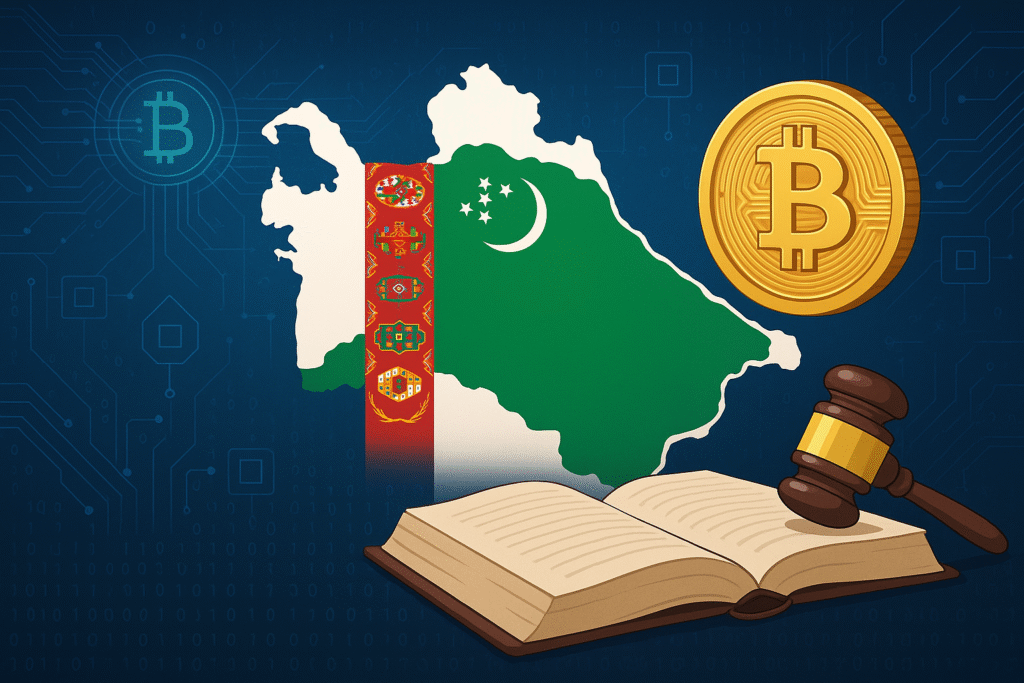
- The rules include licensing, AML checks, cold storage, and strict state authority over token issuances.
- Crypto assets are classified as backed or unbacked and are not legal tender in Turkmenistan.
- The move follows a Nov. 21 government meeting focused on digital asset policy.
Turkmenistan has taken a major step towards formalising its digital asset sector, joining a wave of countries introducing detailed crypto regulations as global frameworks evolve.
The move was confirmed in a Nov. 28 report by Business Turkmenistan, which said President Serdar Berdimuhamedov had approved a new law that will come into effect in 2026.
The legislation introduces a tightly controlled structure for digital assets in a country long known for strict information policies and limited access to outside technologies.
It places crypto exchanges, custodial services, and mining under clear state-defined rules, positioning Turkmenistan within a growing international effort to manage crypto adoption more systematically.
Sweeping rules
The new law establishes licensing procedures for exchanges and custodial platforms.
It sets know your client and Anti Money Laundering checks as standard requirements, along with mandatory cold storage obligations for service providers.
The framework also prevents credit institutions from offering crypto services. The state can stop, void, or enforce the refund of token issuances, placing digital asset activity squarely under government authority.
Mining is a central focus of the legislation. Individuals and organisations must register mining and mining pool operations. Covert mining activity is banned.
The central bank is also given the power to authorise distributed ledgers or operate its own, opening the door to permissioned systems that could direct transactions and digital asset activity through state-managed infrastructure.
Strict classifications
Turkmenistan’s law also defines the legal status of crypto assets. Digital currencies are not considered legal tender, currency, or securities within the country. Instead, the law divides them into two categories: backed and unbacked.
Regulators will later set rules for the liquidity of the backing, settlement requirements, and emergency redemption arrangements for assets in the backed category.
This structure hints at a system in which any asset with underlying backing will face closer supervision, while unbacked assets remain strictly delineated in legal terms.
The legislation was introduced following a Nov. 21 government meeting.
Deputy Chairman of the Cabinet of Ministers Hojamyrat Geldimyradov presented a report outlining the legal, technological, and organisational basis for the introduction of digital assets.
The report was accompanied by a proposal to establish a special State Commission that will oversee the sector and coordinate regulatory decisions as the framework is implemented.
Global context
Turkmenistan’s shift mirrors a wider push among governments to tighten their regulatory approaches to crypto and stablecoins.
Earlier this week, the United Kingdom’s tax authority outlined a new plan that allows decentralised finance users to defer capital gains taxes on crypto lending and liquidity pool activity until they sell the underlying token.
The move reduces the administrative burden on users and brings policy closer in line with how traditional assets are taxed.
In another development, Bank of England Deputy Governor Sarah Breeden said she expects the UK to move in parallel with the United States on stablecoin policies.
This suggests that major economies may establish similar frameworks as stablecoins become more integrated into payment and settlement systems.
International bodies are also reassessing earlier positions.
Erik Thedéen, governor of Sweden’s central bank and chair of the Basel Committee on Banking Supervision, recently indicated that the group may need a different approach to its current risk weighting for crypto exposures after some countries resisted adopting the 1,250% standard.
This reflects rising pressure for coordinated regulatory models as digital asset markets expand.
Political backdrop
The regulatory shift comes against the backdrop of Turkmenistan’s tightly controlled political landscape.
The former Soviet republic, home to around 6.5 to 7 million people, relies heavily on natural gas exports and maintains one of the world’s most centralised presidential systems.
It appears in lists of countries where X and Telegram are banned.
The country is also known for distinctive landmarks, including a permanently burning natural gas crater known as the door to hell, the white marble architecture of its capital, Ashgabat, and a national holiday dedicated to melons.
These features sit alongside heavy state oversight, making the introduction of a structured crypto law a notable change in approach.

